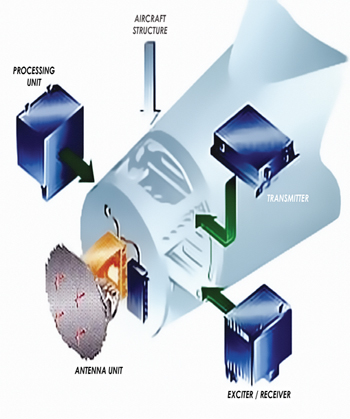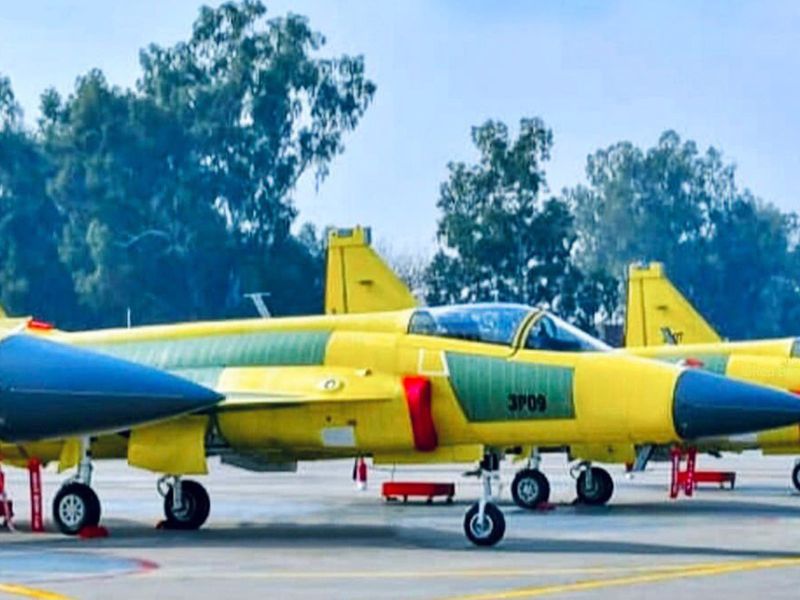EXPORT ORDER FOR JF-17 THUNDER
Issue: 08-2015.... By Air Marshal B.K. Pandey (Retd)
Pakistan has been successful in securing the first ever export order for its JF-17 Thunder fighter aircraft on the very first day of the Paris Air Show in June this year. Air Commodore Khalid Mahmood of the Pakistan Air Force (PAF) dealing in sales and marketing said: “A contract has been signed with an Asian country.” However, the name of the country was not disclosed and deliveries are likely to begin in 2017. The latest models of the jets, which are locally produced in collaboration with China, are lightweight multi-role aircraft capable of flying at twice the speed of sound and has an operational ceiling of 55,000 feet. In comparison, the Indian Air Force (IAF) is struggling with its light combat aircraft Tejas, which will take another year to become ready for combat.
VIEWS:
News of Pakistan having attained a level of capability in her aerospace industry to be in a position to export combat aircraft manufactured in the country has understandably generated a wave of curiosity and even raised eyebrows among experts and analysts alike in India. The news is bound to be perplexing and reflects a contradiction in terms especially as Pakistan is a nation that has often been described as a ‘failed state’ or perched on the verge of it. Given the perpetual confrontation and rivalry between the politico-military establishments of both India and Pakistan, it is only natural that this visible success of the aerospace industry of the latter is immediately compared with what the Indian aerospace industry has been able to deliver so far in the same category of military hardware for the Indian Air Force (IAF). Quite expectedly, the comparison veers round to the home-grown light combat aircraft Tejas programme.
The aerospace industry in Pakistan is centred around Pakistan Aeronautical Complex (PAC) located in Kamra in Attock district. Founded in 1971 by the Pakistan Air Force (PAF), PAC is engaged in the design, development and production of aircraft and avionics systems for both military and civilian application. Since its inception, PAC has been involved with four aircraft projects for the PAF. These are Project Sabre II, K-8 Karakoram, MFI-17 Mushshak and the JF-17 Thunder.
Project Sabre II, which was to be a redesigned version of the Chengdu F-7, Chinese version of the Russian MiG-21 combat aircraft, was to be jointly developed by Pakistan, China and Grumman Aerospace. This project was to be executed by the Aircraft Manufacturing Factory (AMF) of the PAC but to their misfortune was abandoned in 1987. The MFI-17 Mushshak is a piston-engine basic trainer aircraft, a version of the MFI-15 Safari from Saab of Sweden, produced under licence by PAC. The K-8 Karakoram is a Pakistani version of the Chinese Hongdu-8 intermediate jet trainer from the Aviation Industry Group of China. However, in this case the AMF manufactured only some components of the aircraft with the platform being assembled in China.
A contract between China and Pakistan to jointly develop and manufacture in Pakistan, the Chengdu FC-1/Super 7 was signed in June 1999. A full-size mock-up was displayed at Air Show China in November 2002. With production commencing in September 2002, the first prototype rolled out on May 31, 2003. Incidentally, it has a remarkable resemblance with the F-16 from Lockheed Martin of the US. The project was to be a 50:50 partnership with the air forces of both countries committed to placing large orders for the aircraft. PAF has a requirement of 200 of these platforms to begin with. In 2003, the aircraft was re-designated as Joint Fighter-17 (JF-17). The JF-17 Thunder is intended to replace the older fleets of combat aircraft in PAF other than the F-16. So far just over 50 of the order of 200 have been delivered.
From the preceding it should be abundantly clear that despite the fact that Pakistan has been a staunch ally of the US for a long time, its aerospace industry is controlled totally by China.
As regards the first customer for the JF-17, though not disclosed by Pakistan, indications are that it is Sri Lanka that has ordered 14 of these jets. The other possible customer could be Myanmar. In fact, on being invited by the PAF, the Chief of Myanmar Air Force had paid a four-day visit to Pakistan at the end of May this year. Apart from these two, there are a number of potential buyers for the JF-17, lured by the price tag that is under $30 million.
While the Pakistani aerospace industry may be given due credit, comparison with the Indian Tejas programme would not be in order. The JF-17 Thunder, a product of the Sino-Pak collaboration, is similar to the Indo-Russian collaboration for licensed production of the MiG-21 in India. The difference is that in the agreement with the USSR, India did not have the privilege to export the aircraft for political considerations or perhaps lack of ready market. In the regime of indigenous development, the Indian aerospace industry had recorded a major success with the development of the HF-24; but the opportunity to build on the experience was squandered with the premature grounding of the fleet and closure of the programme. Even though it has taken 32 years for the Tejas to get initial operational clearance, it is essentially an indigenous product and unlike the JF-17, is not controlled by a foreign benefactor.










